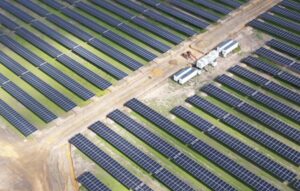Volumes:
Volumes were relatively soft in the National Electricity Market, flat on the week compared to the previous corresponding periodthanks to a lift in QLD. NSW and Victorian volumes were were down 4% and 2% respectively.
Future prices:
FY17 average prices fell in NSW and Victoria, breaking the steady upwards trend of the past 3-4 months. Still, with over $50 available in NSW out to FY19 and over $80 for REC prices, any windfarm in NSW should do well for the next three years. Even in Victoria, prices over $40 are available – giving say $120 MWh, well above the required price. Wind is a small part of the energy mix in those States so no negative correlation with spot prices to speak of.
Spot prices:
Spot prices in South Australia were once again a feature, averaging over $310 for the week. A negative $197 price in Victoria marred what would otherwise would have been a strong week in that State.
Prices in NSW and Vic were a little softer.
REC:
REC prices were once again unchanged according to Mercari, and there was little trading.
Gas prices:
Gas prices were high, although they eased back a bit towards the end of the week. Gas prices averaged $17 GJ in South Australia and there is no doubt gas is physically tight. We expect gas to remain physically tight for at least the next 24 months, and see the medium term risk that despite high prices incentivizing both substitutes and exploration gas will actually get tighter.
That’s because the resource quality in QLD will drop off. We love markets but cannot help but see the irony in Engie having sold the gas that could be used to run Pelican Point, one of the most efficient gas generators in South Australia, to an LNG exporter. We doubt if Engie is getting $8 GJ for the gas, and after netting out transmission costs wouldn’t be surprised if the price is less than $6 GJ.
To continue the irony theme coal fired electricity in QLD (about 1 GW of power) is being used to power the CSG industry so that the CSG can be exported as LNG, largely to China where it will in small part replace Chinese coal. In truth most of the gas exported to China will not replace coal but will go into the commercial and industrial market. The irony remains.
Share prices:
Utility share prices were largely outpaced by the broader market during the week. Only IFN and EWC outperformed the broader market. The AGL and APA share prices were down during the week. There was no great company news to speak of that we monitored although DUE announced that its well performing subsidiary Energy Developments had been successful with a number of remote area contact renewals and extensions. Most companies are in “news blackout”, the period close to results announcement when there is no communication with shareholders.
In this edition we take a very brief look at Victoria post a scenario where both the Hazelwood brown coal generator and the Portland smelter close. Portland in our view is likely to close before Hazelwood and we’d add that Hazelwood because it is configured as 200 MW units can be managed in an orderly fashion. (See below after graphs).

Figure 1: Summary
SHARE PRICES


VOLUMES

BASE LOAD FUTURES


GAS PRICES
 Figure 10: STTM gas prices to 15 July
Figure 10: STTM gas prices to 15 July
A quick look at the Portland/Hazelwood closure scenario
Engie has signaled that it is open to discsussions about Hazelwood. Alcoa has not said what its thinking about Portland but there are clearly reasonable grounds to think that smelter could be closed when a new power price contract takes effect from November 2016.
Victorian electricity consumption was 45.7 TWh in FY16 and Hazelwood generation was 9.3 TWh (20.3%). Portland consumes about 620 MW of power which on a 95% capacity basis is about 5.2 TWh. The net result in this scenario is that the market available to other Victorian generators would increase by about 10% or around 4 TWh in total.
There is a question of where this energy would be sourced from. If it’s from wind, its about 1.2 GW and we’d better get on with it. Of course, there is all the transmission infrastructure at Hazelwood which possibly could lower capital cost of PV installed in the area notwithstanding lower irradiance in Victoria compared to more northerly reaches of Australia.
The closure of Hazelwood and the closure of Portland would likely result in higher electricity prices in Victoria for a time. Since Portland is base load to the max, taking it out of the system would tend to increase the volatility of Victorian demand and more wind would increase the volatility of supply. We don’t see any problem with any of that, but it does need to be allowed for and arguably we should be getting on with it.
 Figure 11: Victorian demand post Portland and Hazelwood closures
Figure 11: Victorian demand post Portland and Hazelwood closures
David Leitch is principal of ITK. He was formerly a Utility Analyst for leading investment banks over the past 30 years. The views expressed are his own. Please note our new section, Energy Markets, which will include analysis from Leitch on the energy markets and broader energy issues. And also note our live generation widget, and the APVI solar contribution.








